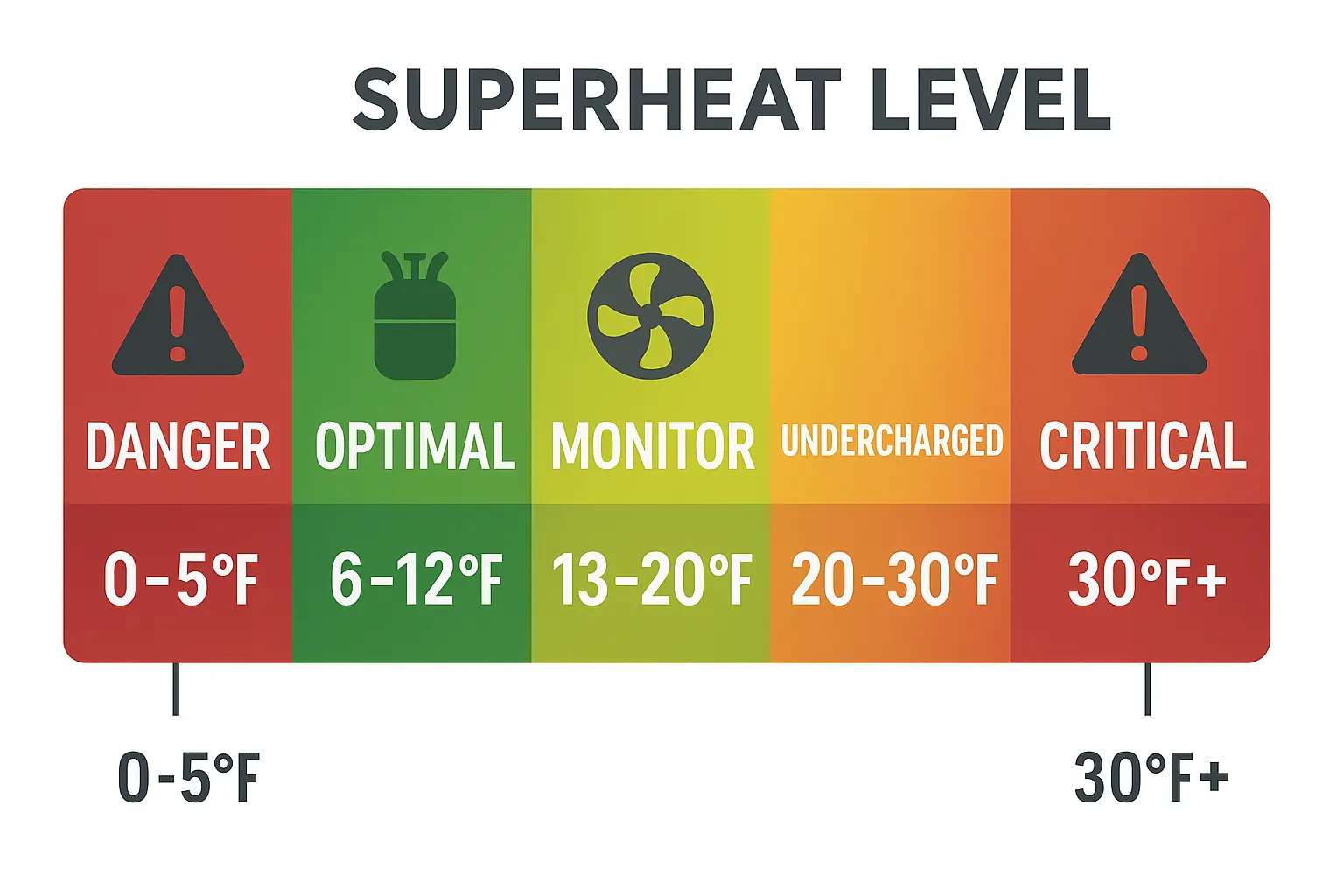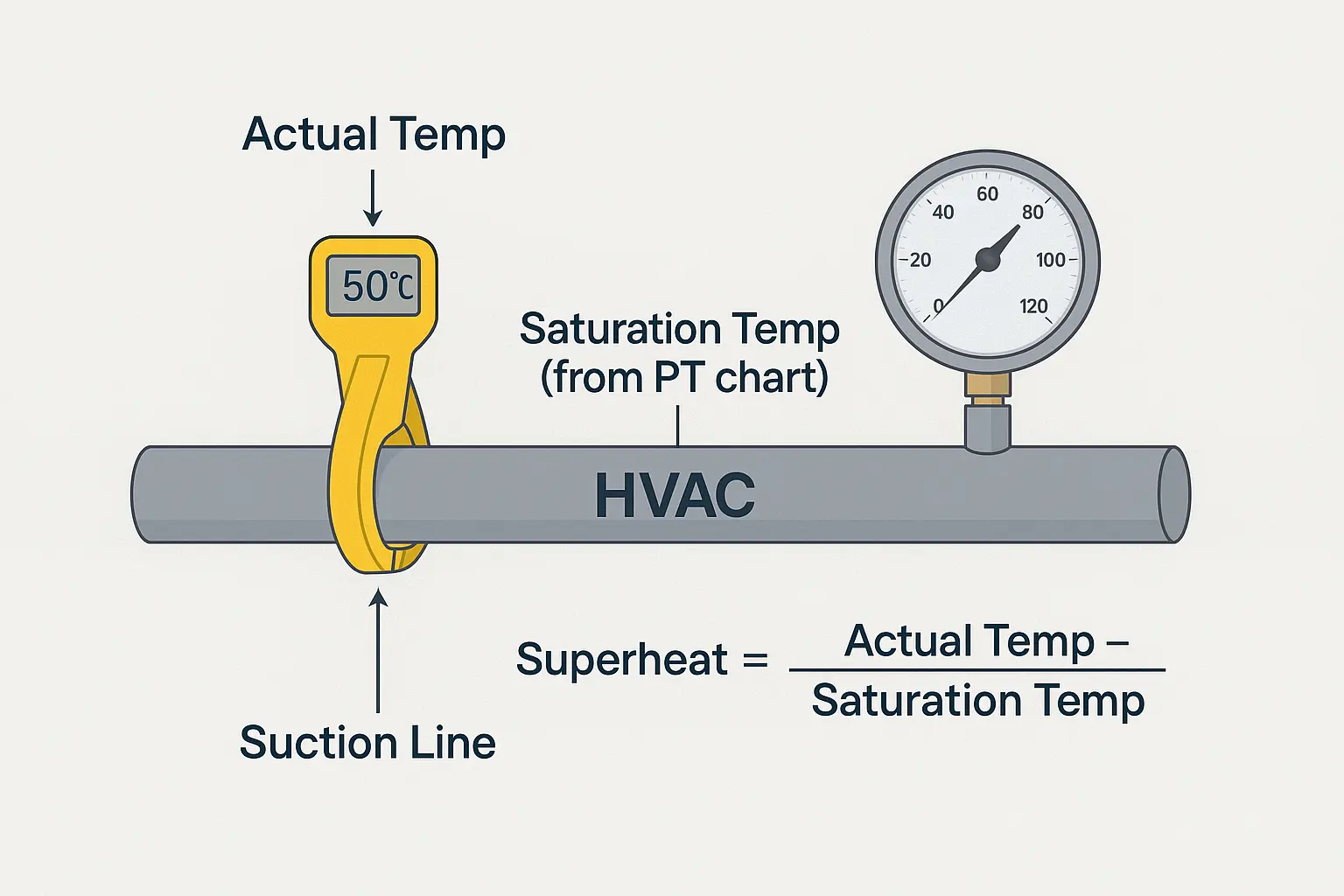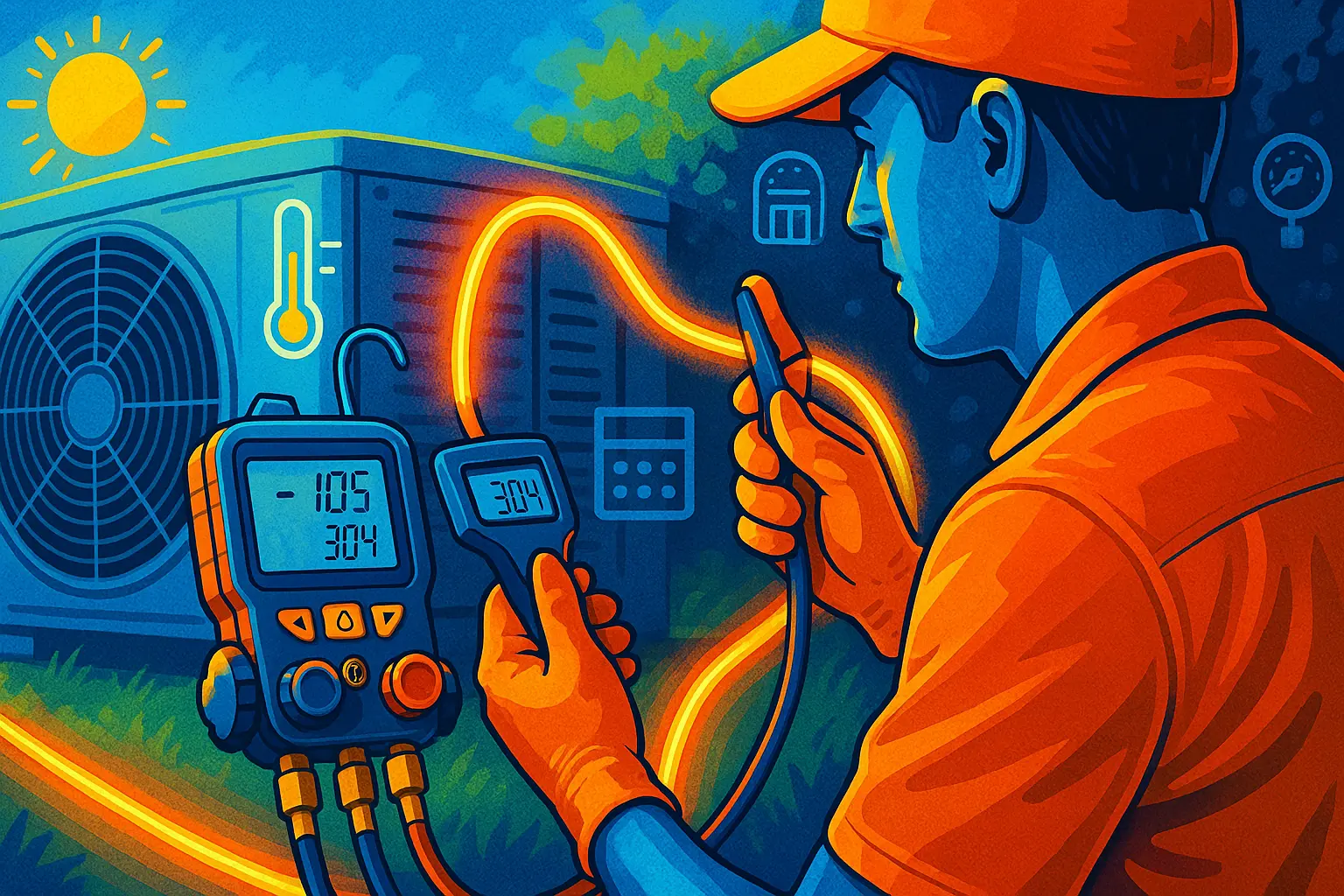I was elbow-deep in a 1990s package unit on a scorcher last July when the maintenance chief ambled over, coffee in hand. “Got numbers yet?” he grinned. I tightened the clamp on the suction line, glanced at my gauges, and shot back, “Give me one more minute, she’s still whispering her superheat.” If you’ve ever wondered how to calculate superheat formula in a real-world situation, that moment was it. The quick subtraction I scribbled on a cardboard box actual line temp minus saturation temp ended up saving the campus from a week of melted ice cream.
That’s the magic of superheat: one tiny equation that can shout, Too much charge!, Starving evaporator!, or Hey, your TXV bulb slipped! If you’re hunting for a down-to-earth, human walk-through on how to calculate superheat formula, pull up a bucket and let’s dive in.
What Exactly Is Superheat?
Think of boiling pasta. Water hits a rolling boil at 212 °F (sea level), but turn the burner up and the steam keeps getting hotter. The extra heat above that boiling point is superheat. Swap water for R-410A or R-22 inside an evaporator coil and you have the HVAC version.
Why techs lose sleep over it:
- Compressor insurance. Proper superheat means only vapor not harmful liquid reaches the compressor.
- Charge detective. High superheat usually whispers “low charge.” Low superheat can scream “flooding” or a lazy metering device.
- Efficiency scorecard. Dialing in superheat shaves kilowatts and customer complaints.
Gear Checklist (Forget One and You’re Guessing)
- Wireless or analog manifold gauge set
- Clamp thermocouple or quick-response pipe probe
- Reliable pressure-temperature (P-T) chart or trusted smartphone app
- Wet-bulb meter (for target superheat)
- Gloves, goggles, yes, frostbite is real
Pro tip: Wipe oxidation off the copper with an Emery cloth before clamping the probe. A shiny pipe = honest temperature.
The Two Numbers You Need
1. Actual Suction-Line Temperature
Clip the probe about six inches from the evaporator exit. Let the system settle 10–15 minutes.
2. Saturation Temperature
Read suction pressure on your gauge, then jump to the P-T chart for your refrigerant. That temp is where liquid and vapor coexist.
Superheat = Actual Suction Temp – Saturation Temp
Quick Example in Plain English
- Suction line: 57 °F
- Suction pressure: 118 psi (R-410A converts to 38 °F sat temp)
- 57 – 38 = 19 °F superheat
Nineteen degrees? Nice middle of the road for a cap-tube or fixed orifice system.
Target vs. Total Superheat, Don’t Mix Them Up
| Term | Why You Care | Typical Use |
|---|---|---|
| Total (Measured) Superheat | Snapshot of what the system is actually doing | Tells you if the charge or airflow is off |
| Target Superheat | What the superheat should be at current load | Used on fixed orifice systems for charging |
Fast-Track Target Formula (Gets You in the Ballpark)
Manufacturers still win, so grab their chart first. In a pinch:
Target ≈ (3 × Indoor Wet-Bulb °F) – (Outdoor Dry-Bulb °F ÷ 2) – 24
Plug in two readings and you’ll know if you’re close or way off.
Story Time: The Freezer That Cried

Small bistro, lunch rush looming. Reach-in freezer idling at 22 °F instead of zero. My numbers:
- Suction line: 66 °F
- Sat temp: 37 °F
- Superheat: 29 °F—yikes.
- Indoor wet-bulb: 60 °F, outdoor dry-bulb: 92 °F → Target ~14 °F
Half a pound of R-404A (added slowly, watching pressures like a hawk) and superheat slid to 14 °F. Owner texted me a week later: “Cheesecake’s rock solid. You’re a legend.” Don’t tell him it was just math.
Ideal Ranges (Rule of Thumb, Not Gospel)
- Fixed Orifice / Cap Tube: 10-20 °F
- TXV Superheat (at bulb): 6-12 °F
- Heat Pump in Cooling Mode: 10-15 °F (varies)
Always check the nameplate or install manual. Some OEMs march to their own drummer.
Step-By-Step Guide: How to Calculate Superheat Formula in the Field

- Hook up gauges. Purge hoses air is the enemy.
- Fire up the system. Take a sip of water; give it 10 minutes.
- Clamp thermometer on a clean suction pipe.
- Record suction pressure and temp at the same second.
- Convert pressure → saturation with your app.
- Subtract. That number is total superheat.
- If using a fixed orifice: grab indoor wet-bulb and outdoor dry-bulb, then chase target superheat.
- Add or recover refrigerant two ounces at a time. Patience beats callbacks.
- Log your final numbers. Future-you will thank you.
Rookie Traps (I Learned These the Hard Way)
- Temp sensor on painted pipe: adds fake degrees.
- Reading pressures while condenser fan is still ramping. Chill.
- Wrong refrigerant selected in the app (R-22 vs. R-410A). Double-check.
- Skipping airflow checks. A plugged filter or iced coil will lie to your gauges.
Homeowner Corner: Three Simple Wins
- Swap filters regularly. Less dust, more airflow, happier superheat.
- Wrap the suction line. Sun-baked copper absorbs heat like crazy.
- Book annual maintenance. Costs less than replacing a cooked compressor.
Want to keep tabs yourself? Bluetooth probes log temps and pressures to your phone. Spotting drift early beats a sweaty Saturday night service call.
Dig Deeper (Great Weekend Reads)
- ASHRAE Handbook Fundamentals: ASHRAE.org for the science behind every BTU.
- HVAC School Podcast: Real techs swapping stories and lessons.
- How Do I Calculate Pressure Altitude?
Grab Your Free Superheat Cheat Sheet
I jammed the most-used P-T pairs, target charts, and a one-page troubleshooting flow into a printable PDF. It lives in my glove box might as well live in yours.
FAQs (Real Questions From New Techs)
1. Can superheat be zero?
Yes, but it shouldn’t. Zero means liquid slugging the compressor. Brace for noise and damage.
2. How often do I measure superheat?
Every diagnostic visit and after any refrigerant adjustment. Think of it like checking oil after topping off a car engine.
3. Is target superheat the same in winter?
No. Lower outdoor temps change load. Follow the winter chart or OEM data.
4. Why does my superheat rise after cleaning a dirty coil?
Cleaner coil = better heat transfer → lower suction pressure → lower sat temp → superheat number bumps up until charge is trimmed.
5. Can I trust app-only probes?
If calibrated, yes. Still, cross-check with a known-good analog set once in a while to catch drift.
One Last Thought
Superheat isn’t a buzzword it’s a window into the soul of a refrigeration loop. Respect it, measure it honestly, and let the numbers nudge you rather than guessing. Next time someone asks, “Is that clamp really telling you all that?” you’ll grin, recall this guide, and know the answer is a loud, confident absolutely.
Stay cool out there.





